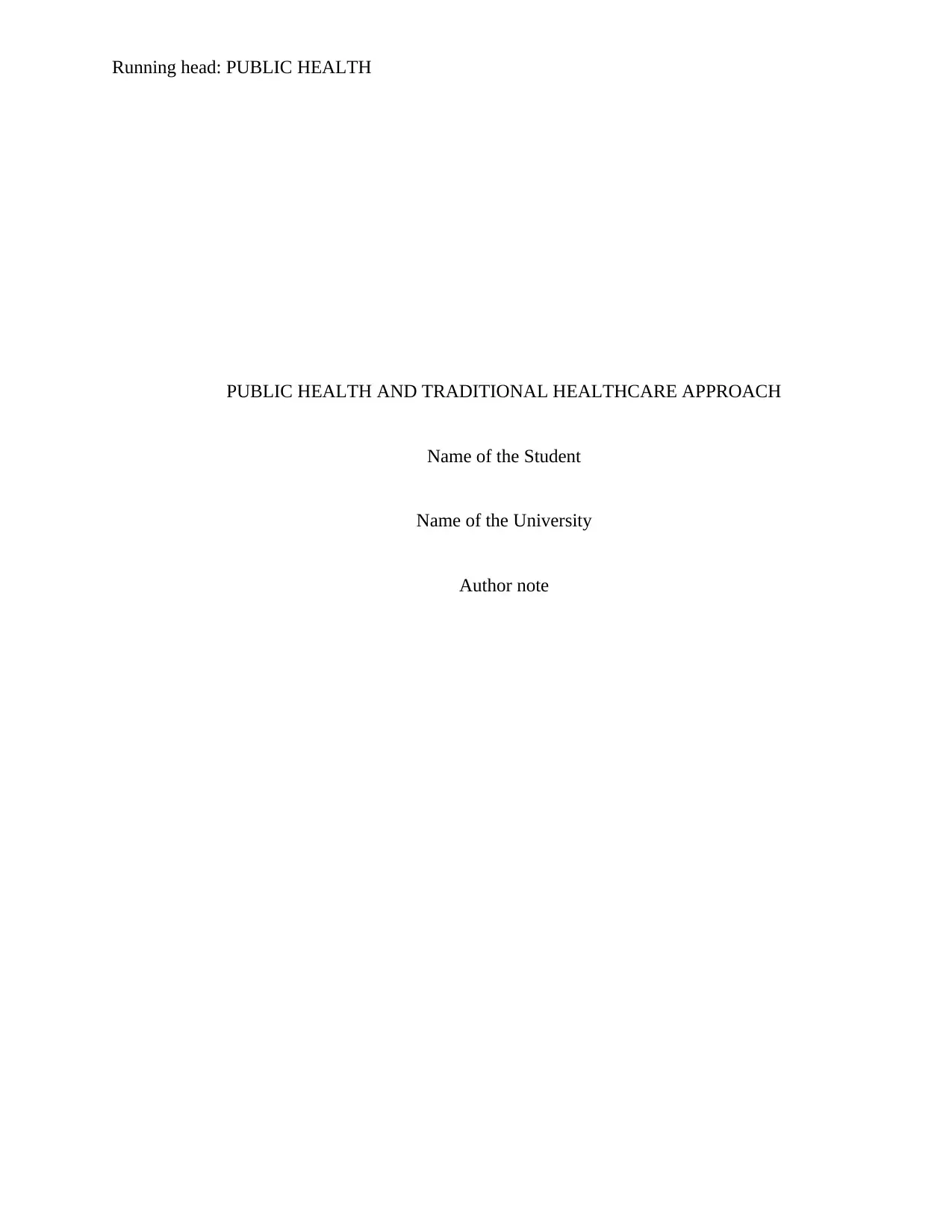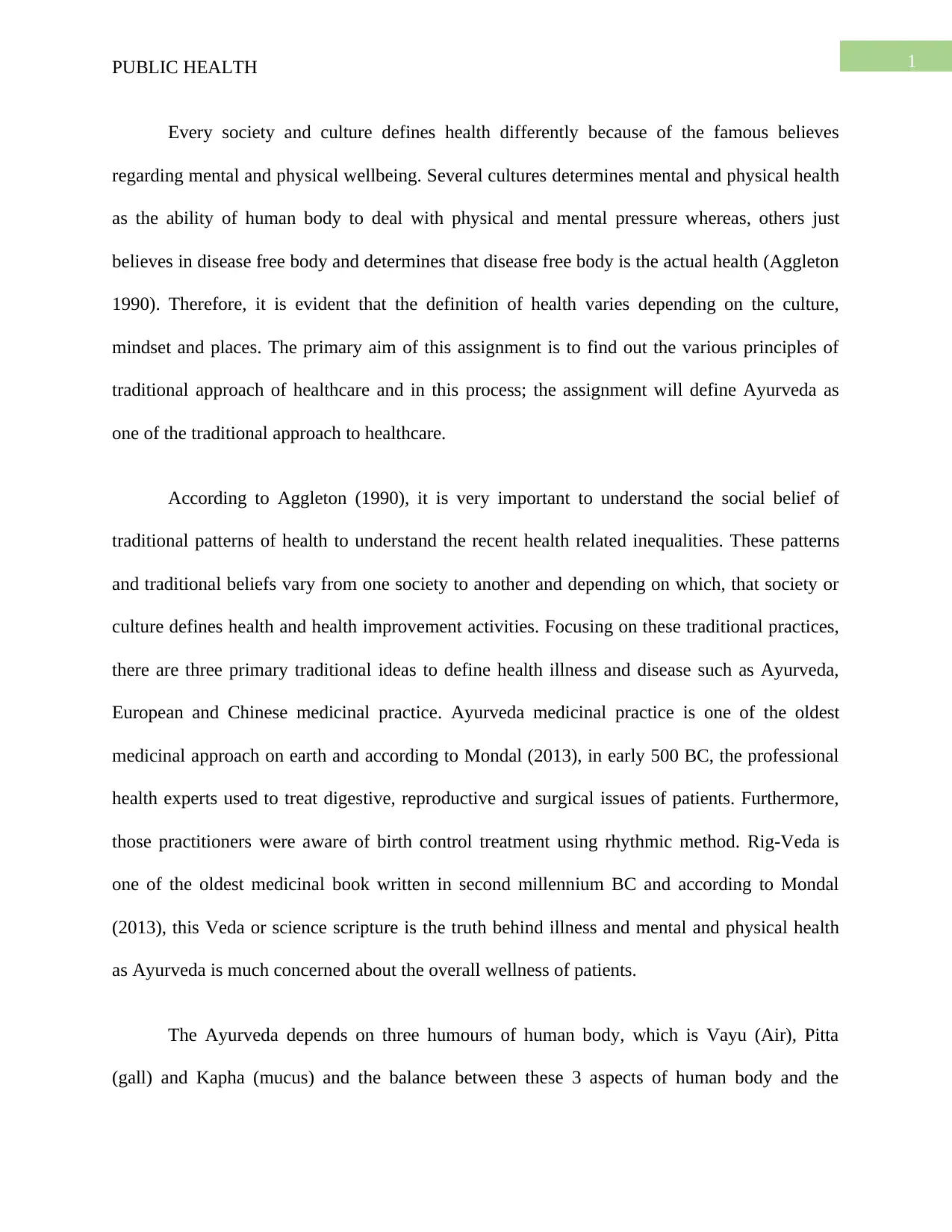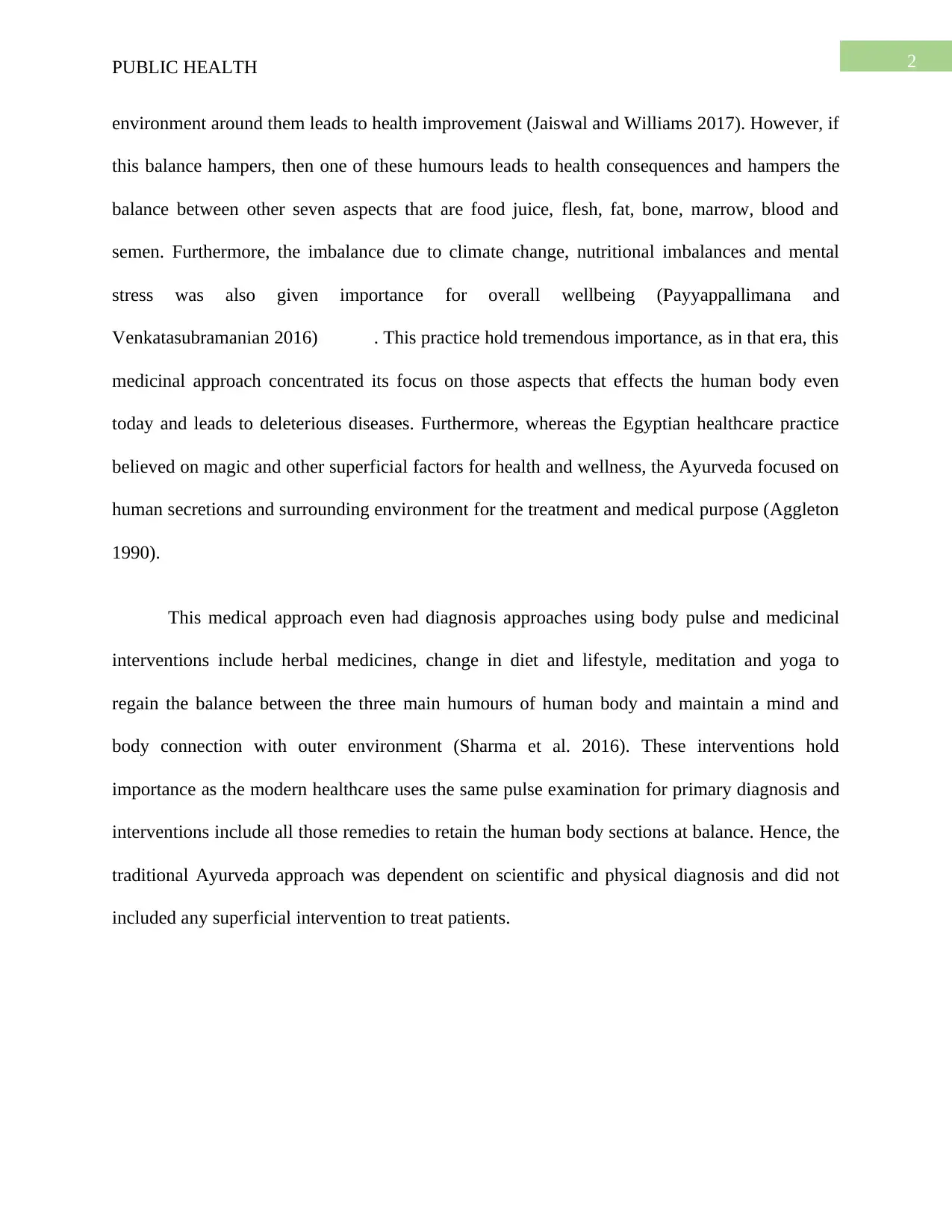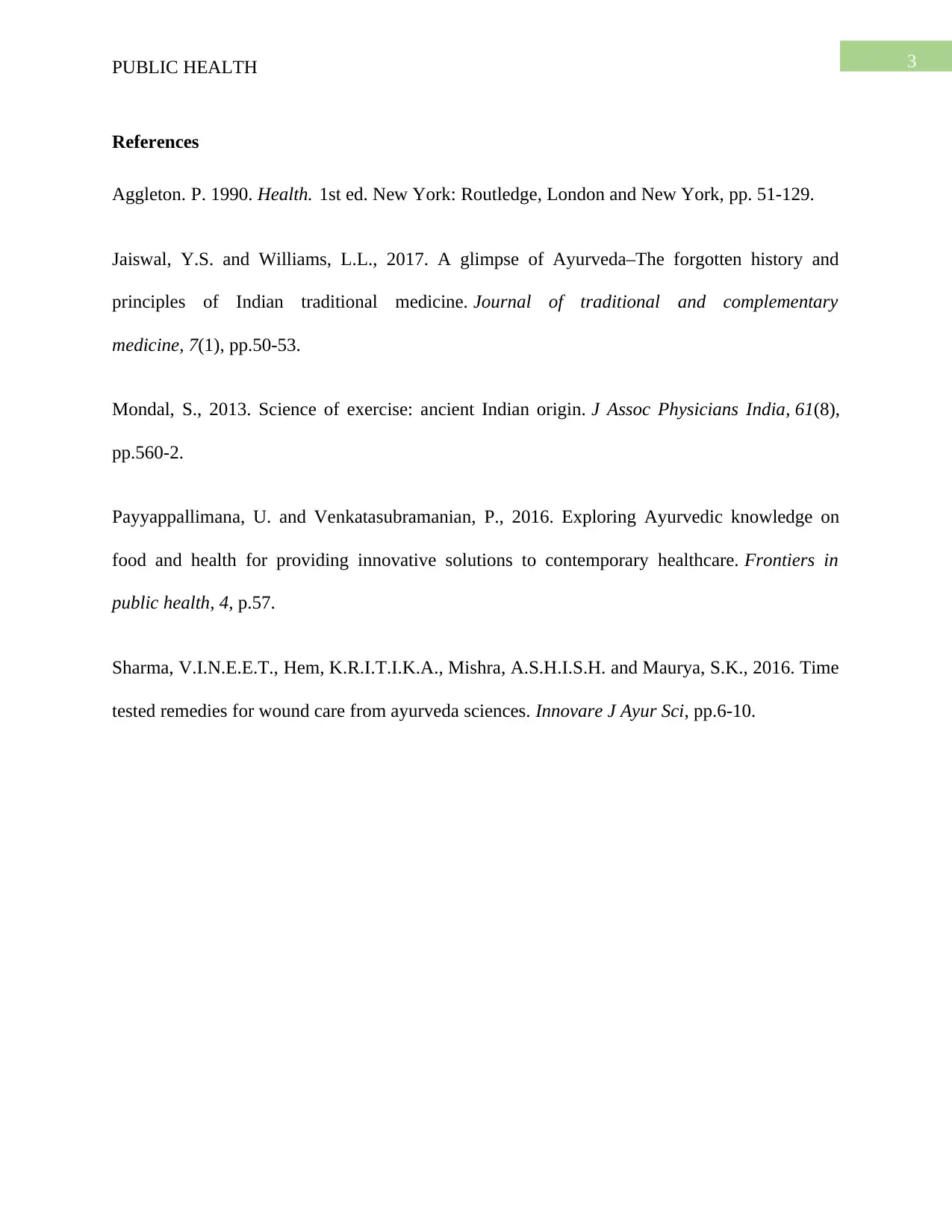Analyzing Traditional Healthcare: Ayurveda in Public Health Context
VerifiedAdded on 2023/06/15
|4
|799
|318
Essay
AI Summary
This essay explores the principles of traditional healthcare, focusing on Ayurveda as a key example. It highlights how different cultures define health based on their beliefs about mental and physical wellbeing. The assignment examines Ayurveda's ancient medicinal practices, dating back to 500 BC, where practitioners addressed digestive, reproductive, and surgical issues. The essay emphasizes Ayurveda's reliance on the balance between Vayu (air), Pitta (gall), and Kapha (mucus) within the human body and its connection to the environment, while also acknowledging the importance of climate, nutrition, and mental health. It contrasts Ayurveda with other practices, such as Egyptian healthcare, and underscores its scientific approach through pulse examination, herbal medicines, dietary changes, meditation, and yoga. The essay concludes by noting the enduring relevance of Ayurveda's diagnostic and interventional techniques in modern healthcare.
1 out of 4










![[object Object]](/_next/static/media/star-bottom.7253800d.svg)